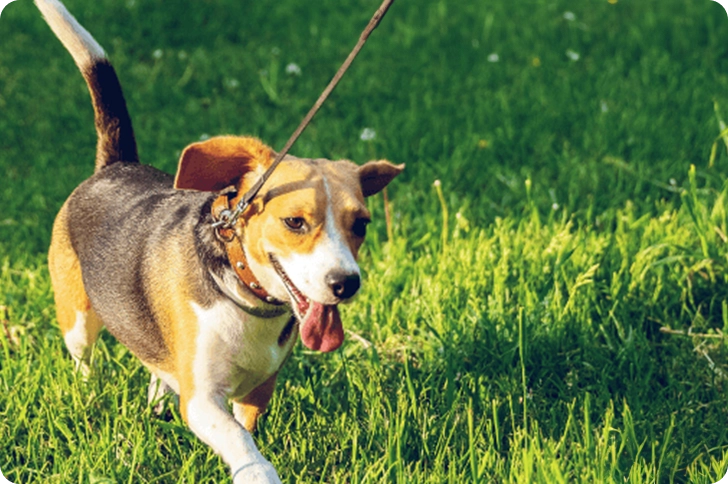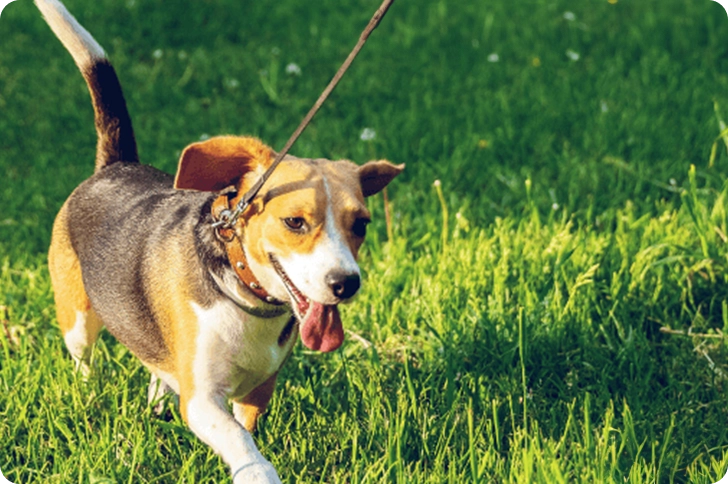22.02.2023 18:28
Dog puberty is a thing that troubles many an owner. A cute puppy suddenly becomes a leggy long-legged dog that seems to have been replaced. He doesn't listen, he's naughty, he runs away... But does it have to be like that?
First of all, it must be said that puberty is a natural part of dog and human development. And it should be treated as such. As natural. In our culture, puberty is often seen as something bad and annoying. And it doesn't matter whether we're talking about children or dogs. They're "ill-mannered teenagers, they're being bludgeoned by hormones and they should just calm down!" How many times have you heard any of this, or even used it yourself? But if we think of puberty that way, it's going to be a real ordeal. And it's going to be a real ordeal for our dog.
I remember two distinct moments from my own adolescence. The first came right at the beginning. I was riding the bus home from school and thinking about everything that had happened at school today, what someone had said, what they must have meant, what would happen when I got home... And then I thought, "That's it! Why are you still thinking about it? You're always thinking about everything lately! It was so cool when you didn't think about anything and just took things as they came." Well, yeah, I could tell myself that, but it was never the same. At a certain age, puberty comes, hormones kick in and everything is new, different, complicated...
The second moment was a fight with my mom. She sent me with the trash can and I got mad that I was always the only one with it and my sister always found an excuse. I really fumed, yelled at her, and - well, I had what I guess we'll all call a "teenage meltdown." And you know what? I felt terrible! I didn't want to act like that. I didn't want to deal with that kind of crap, I didn't want to scream, I didn't want my blood pressure to go up, my stress hormones to come out. It was all very uncomfortable mentally and physically. On top of that, the climb took place in the hallway of a block of flats and I ended up having to run up one floor, sit on the stairs, cry and wait for my stress hormones to get back to some acceptable levels. I didn't want everyone to hear me, for those who came out to see me. But I couldn't do anything else in that moment.
We don't usually think about how the person feels and why they act the way they do. We only see that it's bothersome to us. That he's "hitting puberty."
Dogs are just like people. They can't choose whether or not they will have puberty, or how exactly it will take place. At a certain age, hormones start to kick in, their bodies start to react to them, everything is suddenly different and often very complex. So being dismissive and contemptuous of this change in him is not going to help anything. On the contrary, you're only widening the gap between you.
I know it's hard with dogs at puberty. They go deaf, stop responding to commands and often behave completely unpredictably. But try not to get too upset. Instead, count on it. Secure your dog with a leash or long line. This will prevent a lot of trouble and inconvenience. And be patient. That doesn't mean waiting for it all to pass. Keep training, find new ways to motivate, get your dog used to distractions, but be patient. The dog is not playing tricks on you. He's just doing what he does. What comes naturally to him. Females often experience a huge calming down after the first or second play session. It's not so easy with dogs. But overall, the best behavioral changes come with adulthood. When the dog becomes comfortable with his body, his head and the world around him. And that's not something that comes in a few weeks or a few months. But depending on the breed, it's a matter of a few years. Until then, be patient and focus on how great your dog is. What a great partner you have in him. Even if it seems like you're the last thing in the world to him. And above all, be supportive. Show him the world and give him room to make mistakes. Be understanding. Don't rush to world-class performance. We've all had puberty, so let's give it to our dogs. Educate them, train them, without that, nothing will change even with adulthood. But be patient and anticipate the unpredictable. That's the best thing you can do with a dog's puberty.
Show more







 Cookie - Settings
Cookie - Settings
